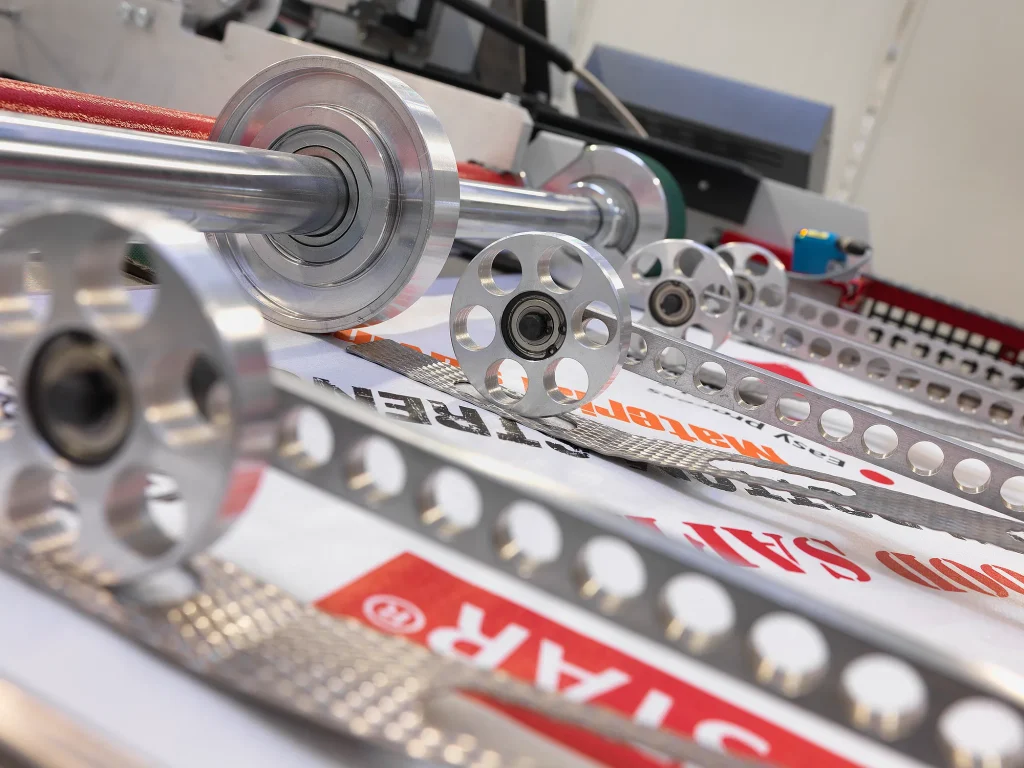
The primary answer this article provides is: FIBC (Flexible Intermediate Bulk Container) jumbo bags reduce post-harvest losses by up to 30% through specialized designs—ventilated weaves (air permeability 600–1,200 L/m²/h), multi-layer barriers (oxygen transmission <0.1 cm³/m²/day), anti-static coatings (surface resistivity <10^6 Ω), and antimicrobial liners (99.9% bacterial inhibition). VidePak’s ISO 9001-certified production lines deliver 1–2 ton capacity FIBCs with 8:1 safety factors, trusted by agribusinesses in 50+ countries.
Introduction
Global food waste exceeds 1.3 billion tons annually, with inadequate storage and transport accounting for 40% of post-harvest losses in developing nations. FIBC jumbo bags, engineered for bulk agricultural commodities like grains, seeds, and fertilizers, are revolutionizing supply chains by merging durability with smart material science. Whether preserving maize in humid climates or safeguarding organic fertilizers from electrostatic ignition, modern FIBCs are no longer mere containers—they’re active preservation systems.
Since 2008, VidePak has deployed 30+ years of polymer expertise and Austrian Starlinger looms to produce FIBCs that meet UN, FDA, and EU standards. With 16 extrusion lines and 100+ circular looms, we manufacture 500,000 FIBCs monthly, serving Cargill, Syngenta, and Olam International across six continents.
Engineering Solutions for Agricultural Challenges
1. Ventilated Designs: Combating Moisture and Heat
- Laser-Perforated Panels: 0.8–1.2 mm micro-pores enable airflow of 800–1,200 L/m²/h, reducing grain moisture content from 14% to 9% in tropical climates.
- Breathable Liners: HDPE mesh (40–60 g/m²) allows vapor escape while blocking pests.
- Case Study: A Kenyan maize supplier reduced mold growth by 75% using VidePak’s vented FIBCs with UV-resistant PP fabric (180 g/m²).
2. Gas and Odor Barriers
- 5-Layer Coextrusion: BOPP/EVOH/PE composites achieve:
- Oxygen Transmission Rate (OTR): <0.1 cm³/m²/day (vs. 2,500 for standard PP).
- Water Vapor Transmission Rate (WVTR): <0.05 g/m²/day.
- Application: Cocoa beans retain aroma profiles for 24+ months under nitrogen flushing.
3. Anti-Static Systems for Hazard Mitigation
- Carbon-Embedded Fibers: Reduces surface resistivity to 10^5–10^6 Ω (ISO 61340-4-4), preventing sparks in combustible dust environments (e.g., flour, sulfur).
- Dissipative Coatings: Graphite-doped PE layers discharge static in <0.5 seconds.
4. Antimicrobial Protection
- Silver Ion Technology: AgNPs (50 ppm) inhibit Aspergillus flavus and Salmonella by 99.9% (ISO 22196).
- FDA-Compliant Additives: Non-leaching, triclosan-free formulations for organic produce.
Technical Specifications by Agricultural Application
| Commodity | Design | Key Parameters | Certifications |
|---|---|---|---|
| Wheat/Grains | Ventilated | 180 g/m² PP, 1,000 L/m²/h airflow | FDA 21 CFR 177.1520 |
| Fertilizers | Anti-Static | 220 g/m² PP, 10^6 Ω resistivity | UN 13H3, IECEx |
| Coffee Beans | Gas-Blocked | 5-layer BOPP/EVOH, OTR <0.05 cm³/m²/day | SCA Green Coffee Protocol |
| Organic Seeds | Antimicrobial | 150 g/m² PP + AgNP liner | OMRI Listed, EU Organic |
Durability & Safety Metrics
- Load Capacity: 1–2 tons with 6:1 to 8:1 safety factors (ISO 21898).
- Seam Strength: >2,500 N/5cm (ASTM D4884).
- UV Resistance: <5% tensile loss after 1,000 hrs QUV testing (ASTM G154).
FAQs: Optimizing FIBC Selection
Q1: How do ventilated FIBCs prevent condensation?
Micro-pores facilitate airflow equivalent to 20 air changes/hour, maintaining relative humidity <65% inside the bag.
Q2: Are anti-static FIBCs reusable in explosive environments?
Yes, if surface resistivity remains <10^8 Ω after 10+ washes. VidePak’s carbon-core bags retain conductivity for 15 cycles.
Q3: What certifications ensure food-grade compliance?
EU Regulation 10/2011, FDA CFR 175.300, and FSSC 22000 for direct contact with edible goods.
Q4: Can FIBCs withstand -30°C storage?
PP fabric remains flexible, but avoid impact loads. Use laminated PE liners (120–150 µm) for cryogenic conditions.
VidePak’s Manufacturing Excellence
- Starlinger STeX Looms: Weave 240 cm wide fabric with ±1% density tolerance.
- In-House Testing: Measures OTR (ASTM D3985), tear resistance (ASTM D2261), and microbial inhibition (ISO 20743).
- Sustainability: 100% recyclable PP with 30% post-industrial recycled content (UL ECOLOGO certified).
References
- VidePak Corporate Profile: https://www.pp-wovenbags.com/
- Industry Standards: ISO 21898, ASTM D4884, EU 10/2011.
- Research: Post-Harvest Loss Reduction Strategies (FAO, 2023).
For inquiries, contact info@pp-wovenbags.com.
External Resources:
- Explore anti-static FIBC innovations: Anti-Static FIBC Bags: Health and Safety Performance Evaluation.
- Learn about FIBC manufacturing processes: Understanding FIBC Jumbo Bag Production.
Authored by VidePak’s Agricultural Packaging Division | Updated: March 2025